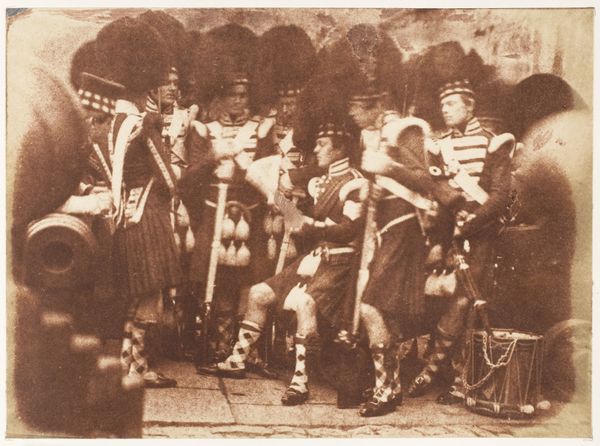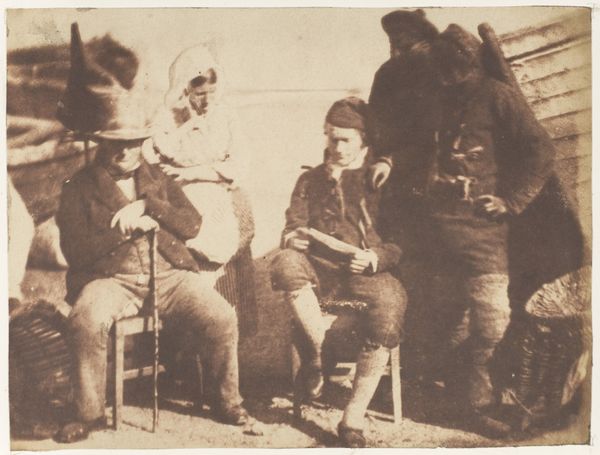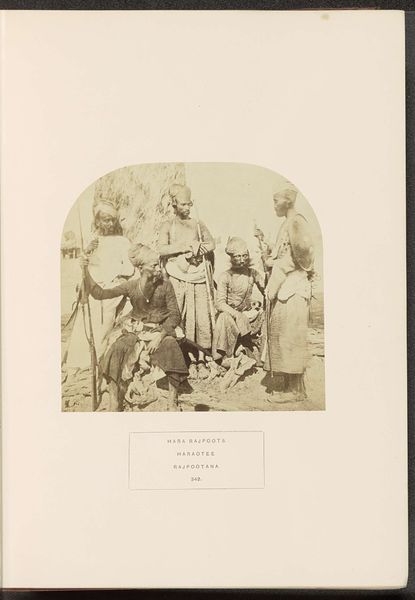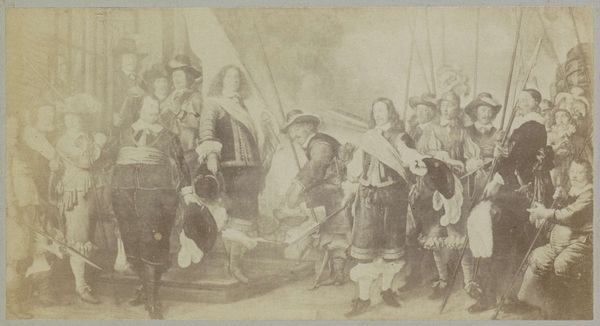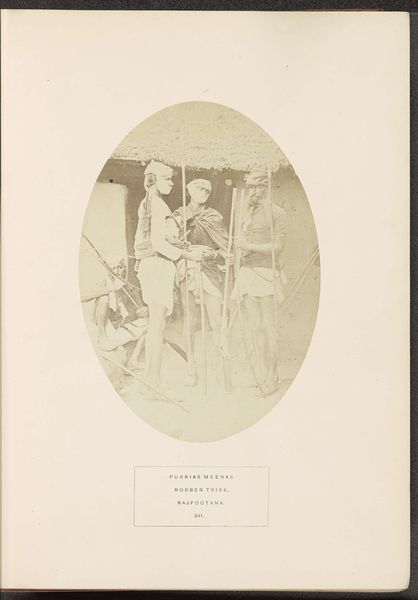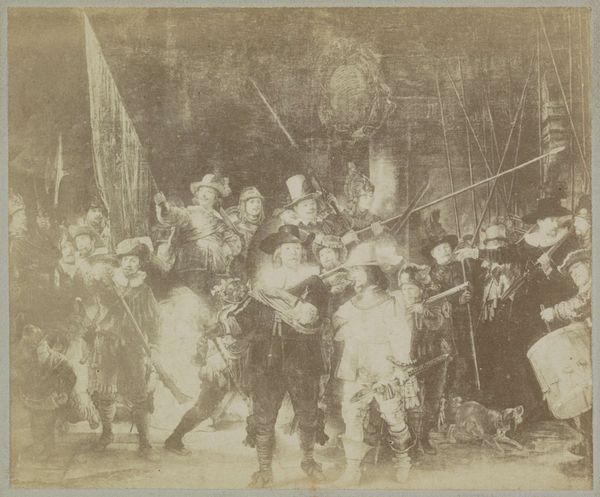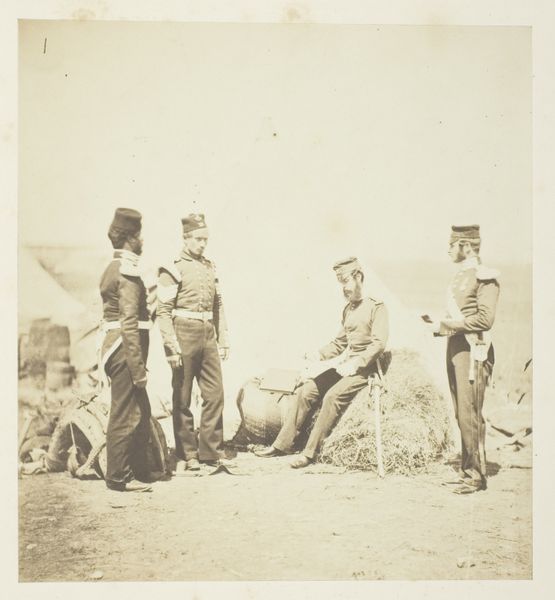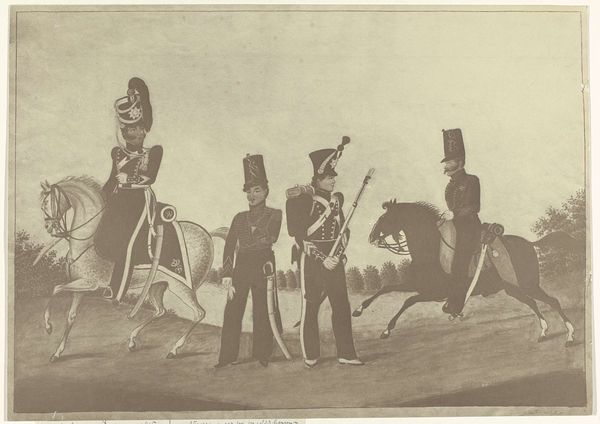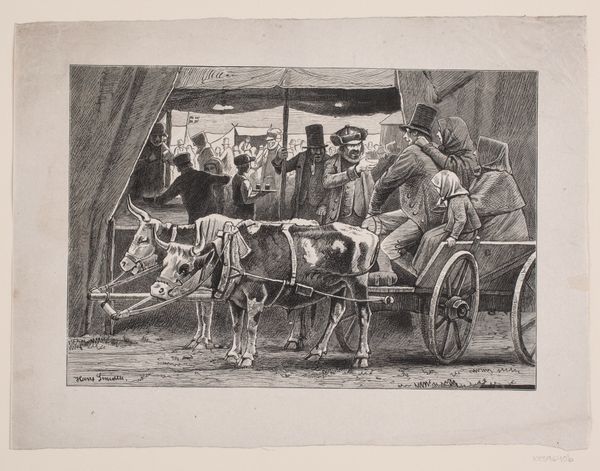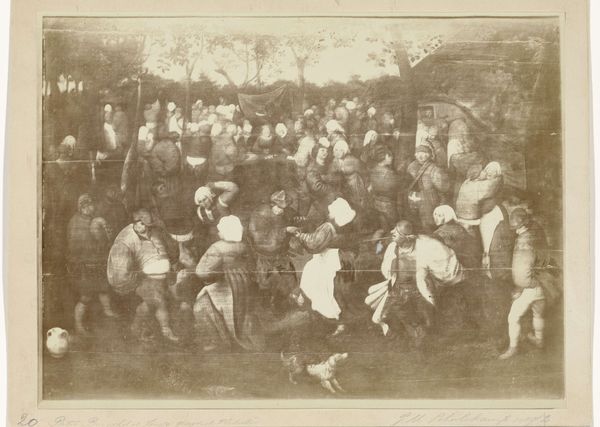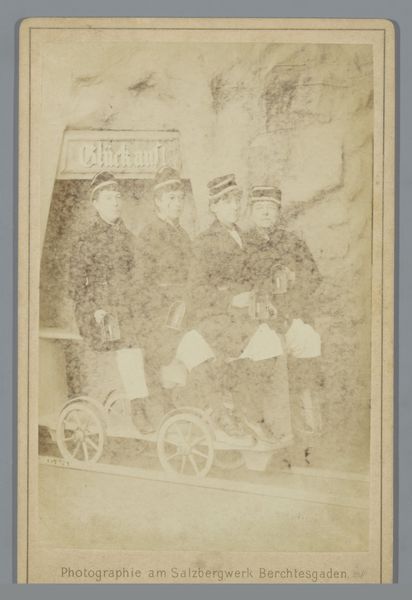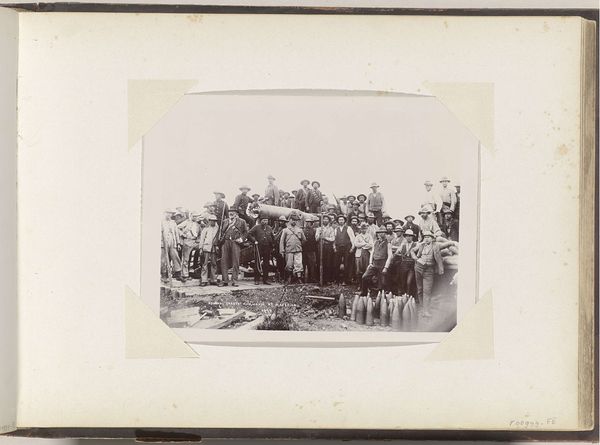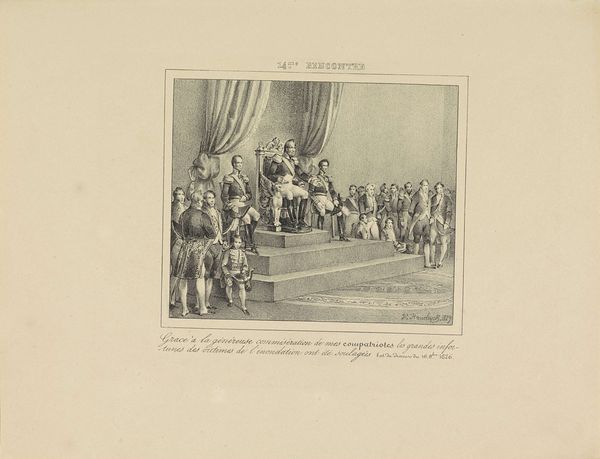
The 42nd Gordon Highlanders, Edinburgh Castle 1843 - 1847
0:00
0:00
photography, gelatin-silver-print
#
portrait
#
photography
#
group-portraits
#
romanticism
#
gelatin-silver-print
Copyright: Public Domain
Curator: This daguerreotype, “The 42nd Gordon Highlanders, Edinburgh Castle,” was taken between 1843 and 1847 by Hill and Adamson. It feels almost…staged. There's a stillness despite the subject being soldiers and weaponry. What stands out to you? Editor: The cannons! They look enormous and imposing. But I’m struck by the fact that these men in their tartans and feathery hats are placed next to such destructive objects. The contrast feels deliberate. How should we interpret the placement of materials within this photograph? Curator: Precisely! Consider the means of production, not just of the photograph, but also of the Highland regiment itself. What resources - both human and material - are required to manufacture the soldiers’ uniforms, their weapons, their identity? This photo monumentalizes British power at this specific point in time. What does this reveal about the social context of Romanticism as a style, juxtaposed with industrial innovations such as photography? Editor: I see what you mean. The "romantic" part is, on one level, all of this imagery, their clothing and accoutrements - the guns and kilts are being carefully rendered to elicit feeling. Curator: Yes, and by using the then-new technology of photography to capture this scene, the work implicates these romantic ideas within Britain's emerging status as an industrial empire. We must examine how the photographic process itself – the labor, the materials, the distribution – reinforced existing power structures. Who had access to this technology, and whose stories were being told? Editor: So, the photo itself isn't just a neutral record. Its production is entwined with economic and cultural forces at play in that time? Curator: Exactly. It forces us to confront the material conditions that underpinned both artistic representation and the very identity of these soldiers. Think about it as both a beautiful artifact, and also as an advertisement for military, and British, might. Editor: This has given me so much to think about. I will look at images with new eyes. Curator: Likewise, considering how even "art" has roots in production of all kind reveals deeper insight and cultural messaging that speaks of power.
Comments
No comments
Be the first to comment and join the conversation on the ultimate creative platform.
